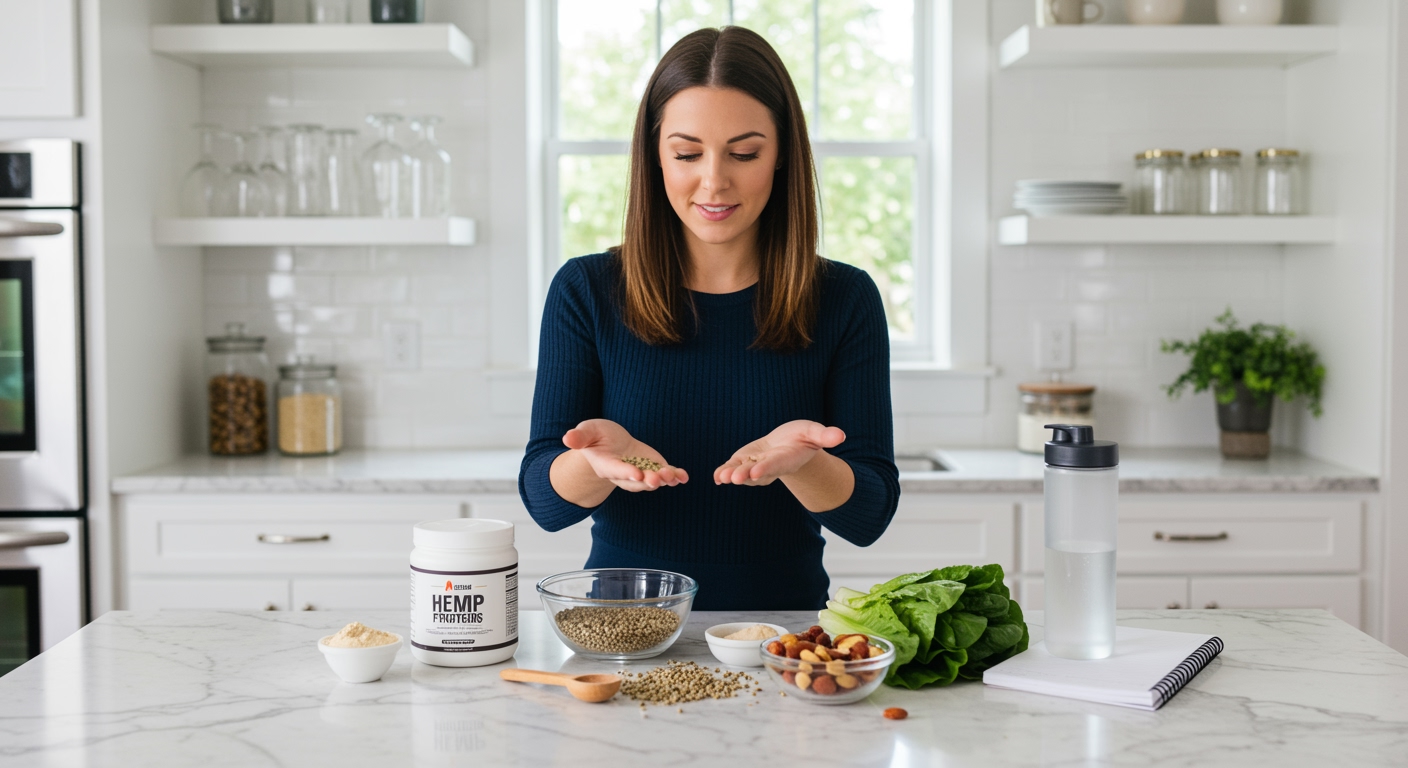✪ Key Takeaway: Spirulina provides iron, B vitamins, and protein that women with PCOS often lack, but it cannot replace a balanced diet.
Introduction
Women with PCOS spend hundreds of dollars on supplements that promise to fix their nutrient deficiencies overnight.
You might be wondering if spirulina can actually fill the nutritional gaps that PCOS creates in your body.
Hi, I am Abdur, your nutrition coach and today I am going to explain how spirulina affects PCOS-related nutrient deficiencies and whether it deserves a place in your daily routine.
What Nutrients Do Women With PCOS Actually Lack?
Women with PCOS commonly develop iron deficiency due to heavy menstrual bleeding and poor absorption.
Vitamin B12 deficiency affects up to 28% of women with PCOS, especially those taking metformin for insulin resistance.
Chronic inflammation in PCOS increases the need for antioxidants like vitamin C and beta-carotene.
Protein deficiency becomes common when women follow restrictive diets to manage PCOS weight gain.
Insulin resistance reduces the absorption of several nutrients, creating a cycle where deficiencies worsen PCOS symptoms.
✪ Fact: Women with PCOS have 40% lower vitamin B12 levels compared to women without the condition.
Does Spirulina Contain These Missing Nutrients?
One tablespoon of spirulina provides 2 milligrams of iron, which equals about 11% of your daily needs.
Spirulina contains vitamin B12, but the form is mostly pseudovitamin B12 that your body cannot use effectively.
The beta-carotene content in spirulina is impressive, providing powerful antioxidant protection against PCOS inflammation.
With 4 grams of protein per tablespoon, spirulina offers all essential amino acids in a highly digestible form.
However, the small serving size of spirulina means you would need unrealistic amounts to meet your daily nutrient requirements.
The iron in spirulina is non-heme iron, which absorbs poorly compared to iron from animal sources.
✪ Pro Tip: Combine spirulina with vitamin C-rich foods to boost iron absorption by up to 300%.
How Much Spirulina Do You Need For PCOS Benefits?
Research studies showing PCOS benefits used 1-2 grams of spirulina daily, which equals about half a teaspoon.
This amount provides meaningful antioxidant support but only small amounts of vitamins and minerals.
Taking more than 8 grams daily can cause digestive upset and may interfere with medication absorption.
The protein content in a typical spirulina dose contributes less than 10% of your daily protein needs.
Most women with PCOS would need to eat 10-15 grams of spirulina daily to make a significant dent in their nutrient deficiencies.
This amount would cost over 100 dollars monthly and likely cause unpleasant side effects.
✪ Note: Start with 1 gram daily and gradually increase to assess your tolerance before reaching therapeutic doses.
What Works Better Than Spirulina For PCOS Deficiencies?
Lean red meat provides 10 times more bioavailable iron than the same amount of spirulina.
A single vitamin B12 supplement delivers more usable B12 than months of spirulina consumption.
Colorful vegetables offer more diverse antioxidants and fiber that spirulina cannot match.
Combining targeted supplements with whole foods addresses PCOS deficiencies more effectively than relying on spirulina alone.
A well-planned diet with nutrient-dense foods costs less than high-dose spirulina supplementation.
However, spirulina can serve as a valuable addition to your routine, not a replacement for proper nutrition.
✪ Pro Tip: Use spirulina as a nutrient booster in smoothies while focusing on whole foods for your main nutrition.
The Bottom Line
Spirulina contains nutrients that women with PCOS commonly lack, but the amounts are too small to fix serious deficiencies.
Smart supplementation starts with identifying your specific deficiencies, not hoping one superfood will solve everything.
Share your experience with spirulina or ask questions about PCOS nutrition in the comments below.
References
At NutritionCrown, we use quality and credible sources to ensure our content is accurate and trustworthy. Below are the sources referenced in writing this article:





